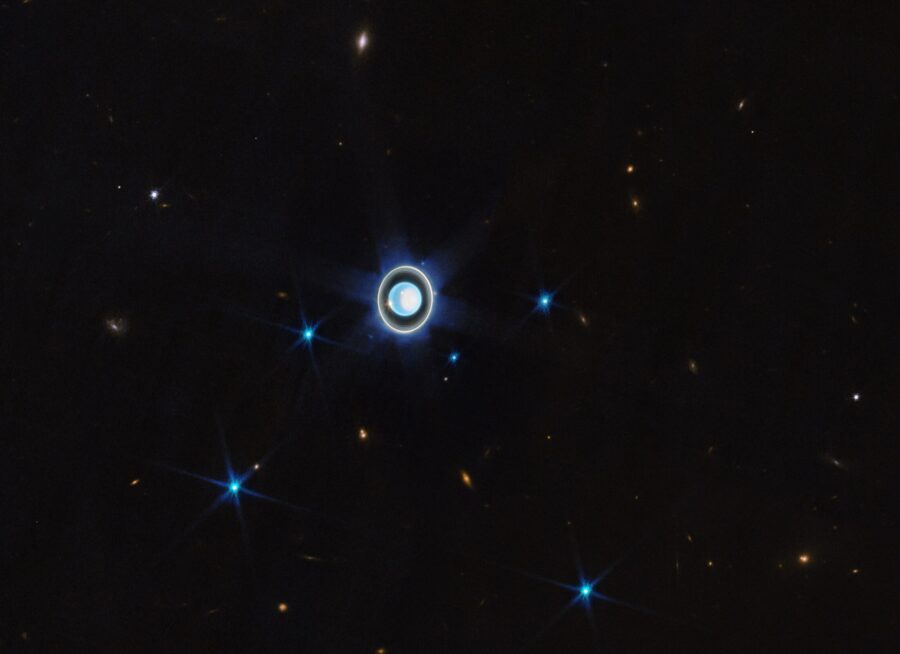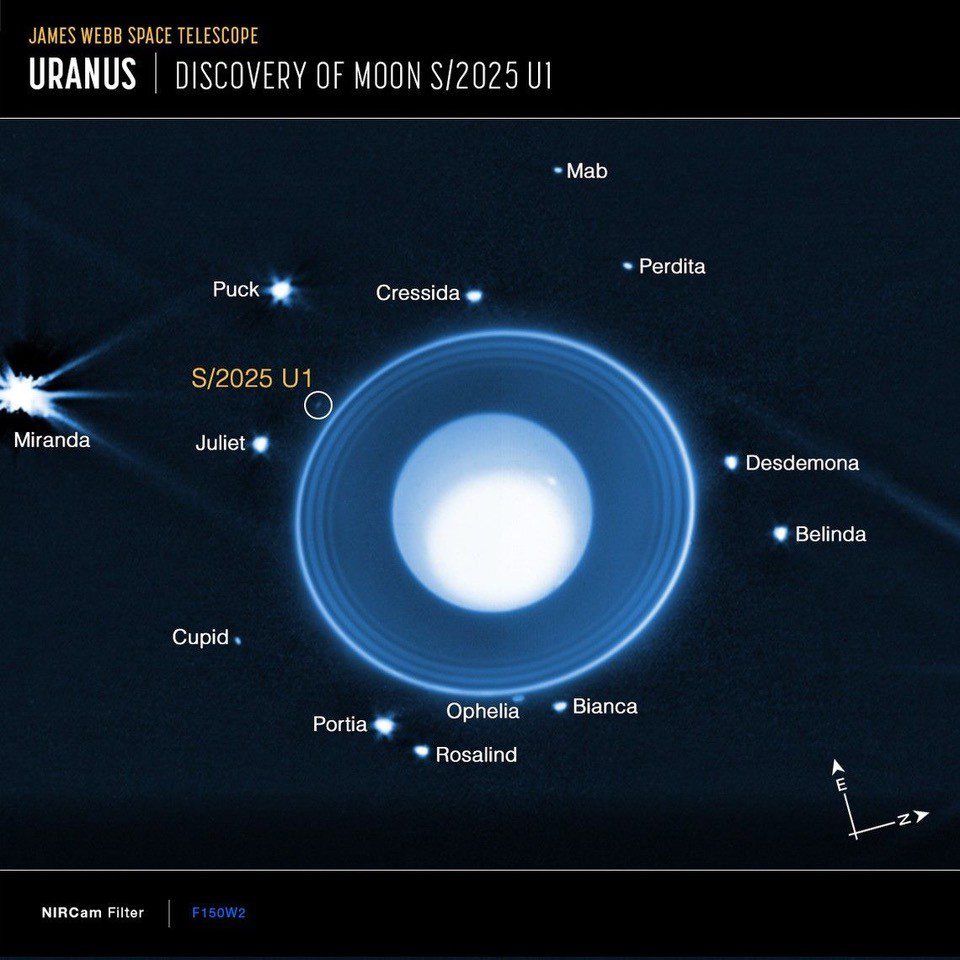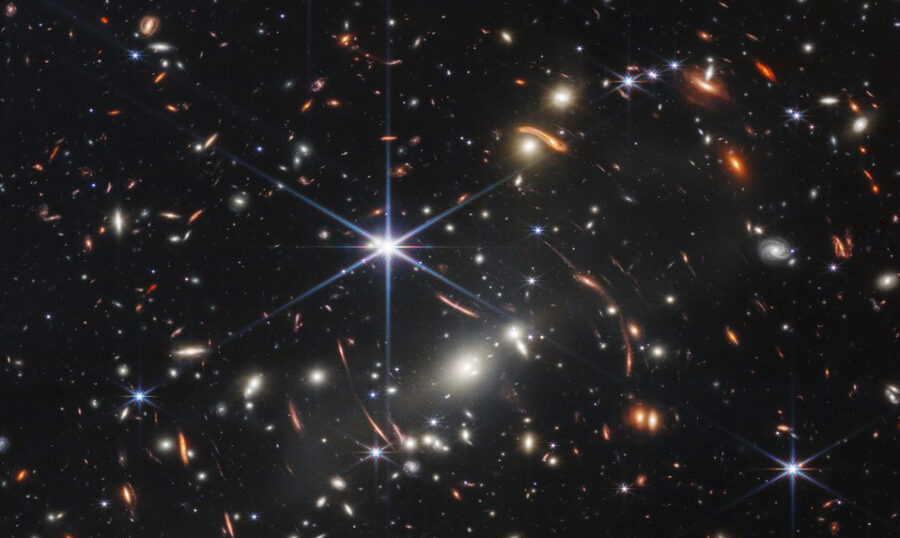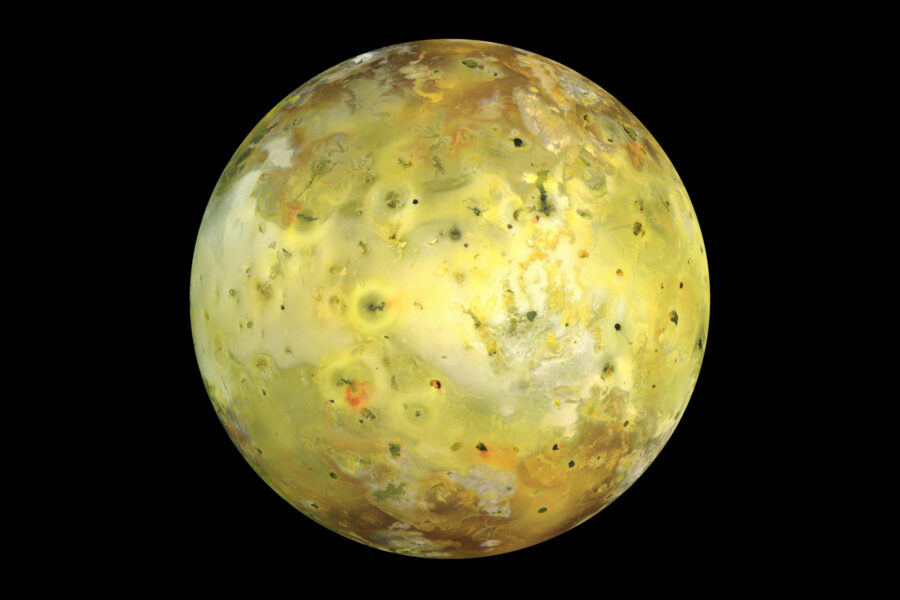Uranus’s newly discovered moon just 10km wide

Fred Watson
Fred Watson

What they had found was a previously undiscovered moon of Uranus, a planet already known to have a retinue of 28 natural satellites. The scientists’ observing program was specifically targeted at studying the rings and moons of Uranus, so what made this anything other than a routine detection?
The answer lies in the remarkable parameters of the discovery. Provisionally designated S/2025 U1, the newly found moon is minuscule, with a diameter of about 10km. Its dusky surface shines dimly with reflected sunlight. Extraordinary, then, that it could be detected from our vantage point 2.91 billion km away – and the instrument that made this observation was the ever-capable James Webb Space Telescope.
Since the telescope’s commissioning in 2022, we have become used to detailed infrared images of stars, nebulae and galaxies seen when the universe was in its infancy. But the discovery of S/2025 U1 highlights its capabilities in the exploration of the solar system’s smaller bodies, including planetary satellites. It’s very likely that we will see more such discoveries.

S/2025 U1 itself is perhaps a foretaste of further insights into the complex gravitational interactions between Uranus’s smaller moons and its system of dusty rings. Orbiting some 30,000km above the planet’s cloud tops, the newly found satellite has an almost perfectly circular orbit, suggesting it formed in situ rather than being captured by Uranus’s gravitational pull.
In comparison with the other giants of the solar system, Uranus’s retinue of moons is relatively modest. The tally for Jupiter is currently 97, while Saturn boasts an astonishing total of 274 known moons. Neptune trails with 16. All four gas giant planets have a handful of significantly larger moons – Jupiter’s Ganymede and Saturn’s Titan are larger than the planet Mercury. At the other end of the scale are satellites ranging in size from a few hundred kilometres down to objects comparable to S/2025 U1.
So, will that tiny world eventually be graced with a more memorable name? Indeed, it will. Uranus’s moons are usually named after Shakespearean characters, with Titania and Oberon being the largest. They were found by William Herschel in 1787, so the discovery and naming of S/2025 U1 follows a long and noble tradition.





